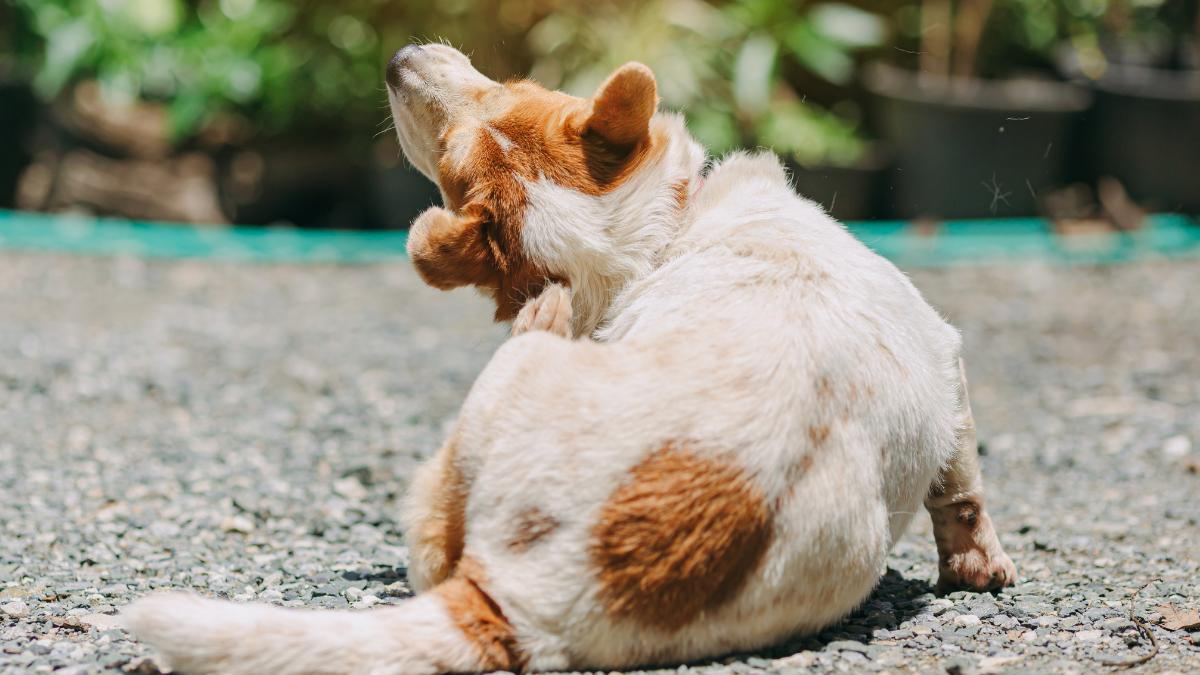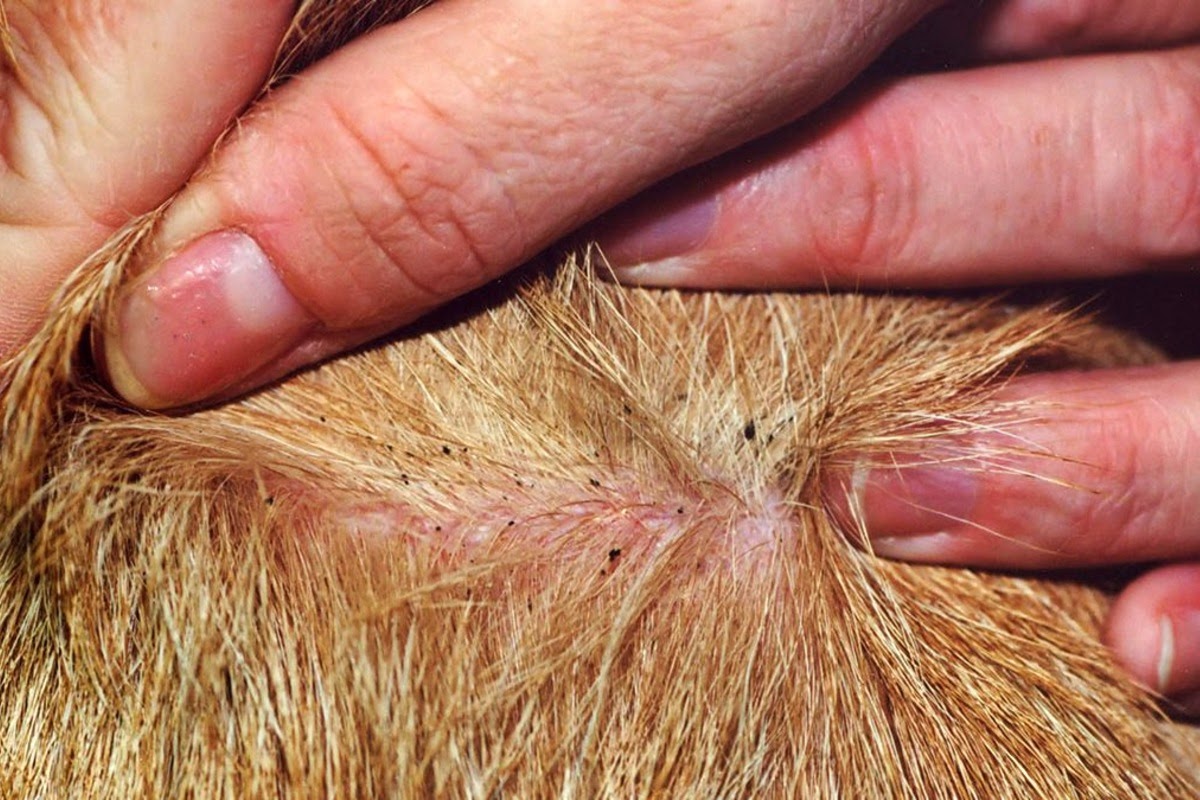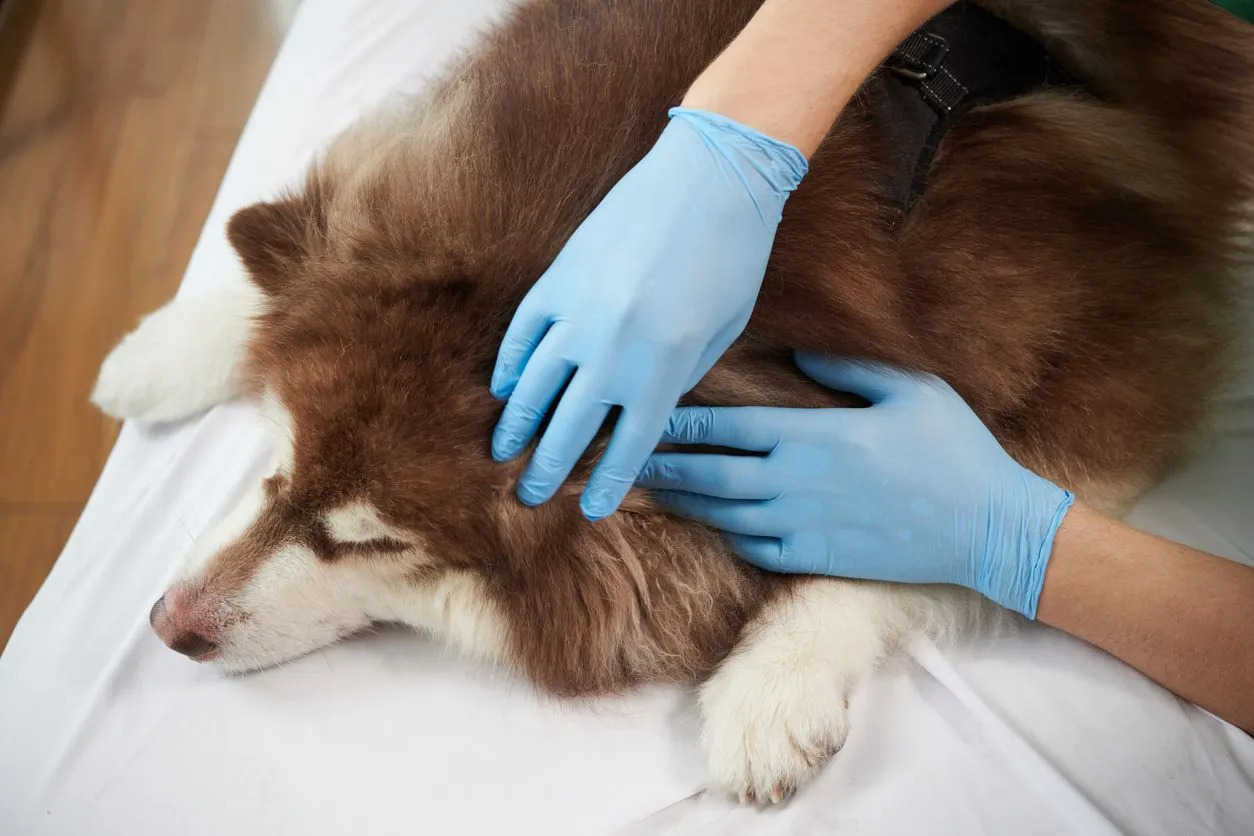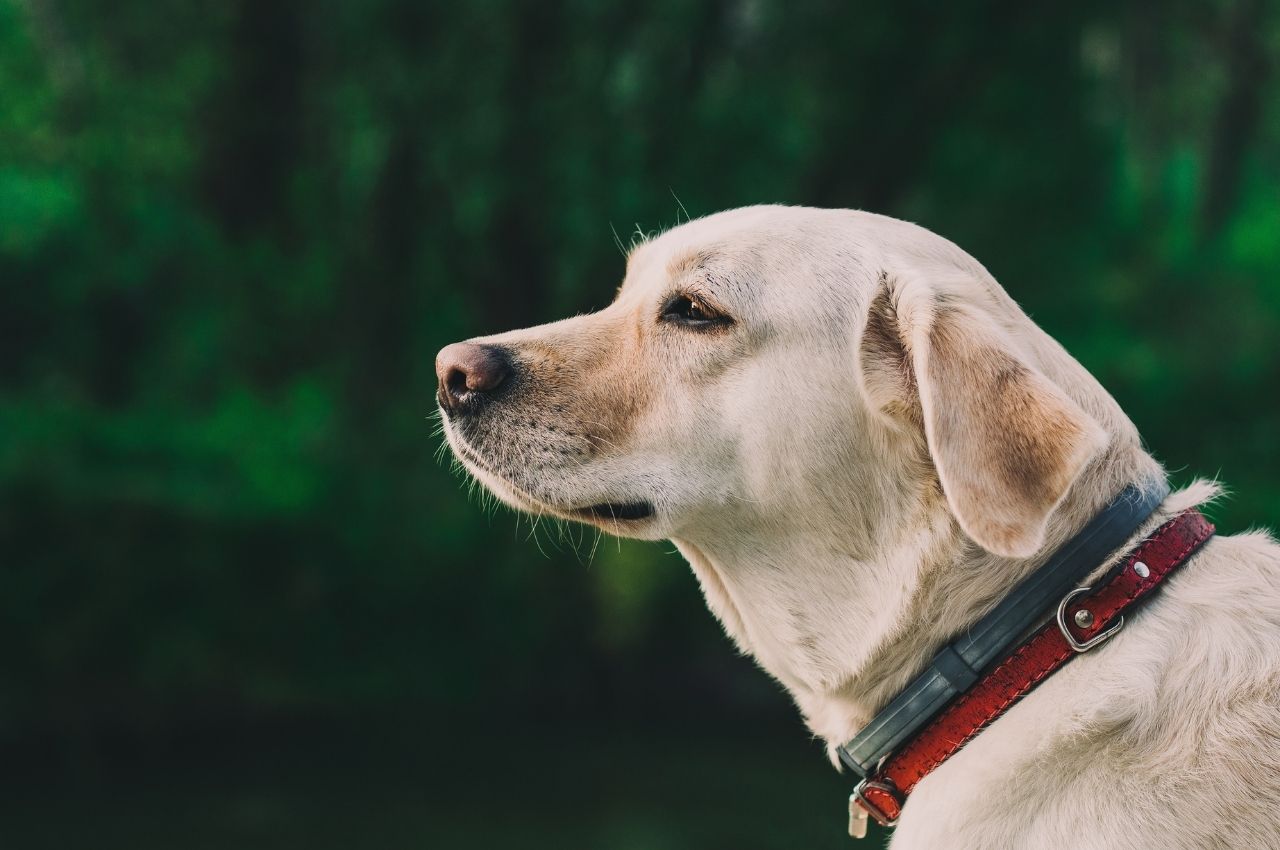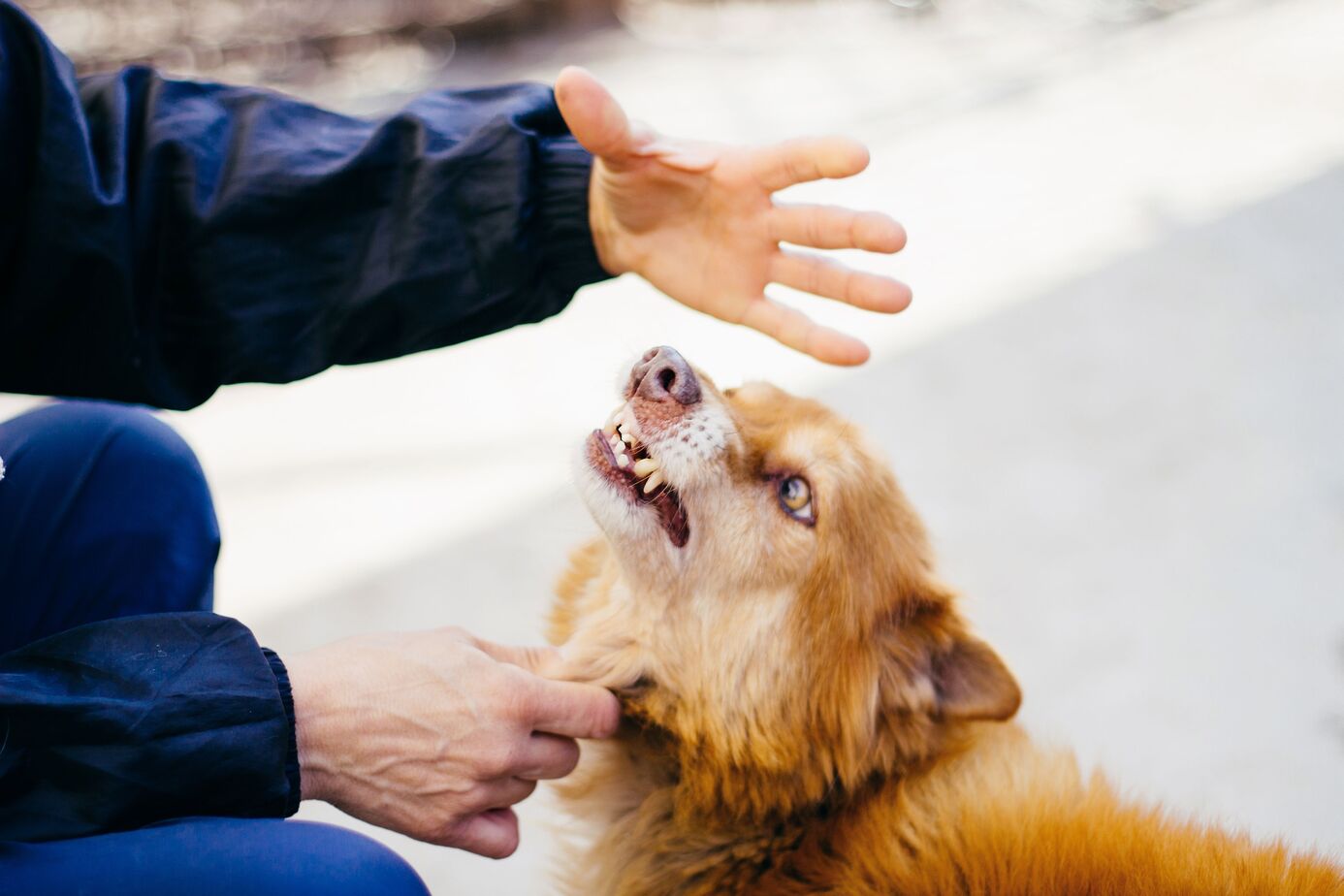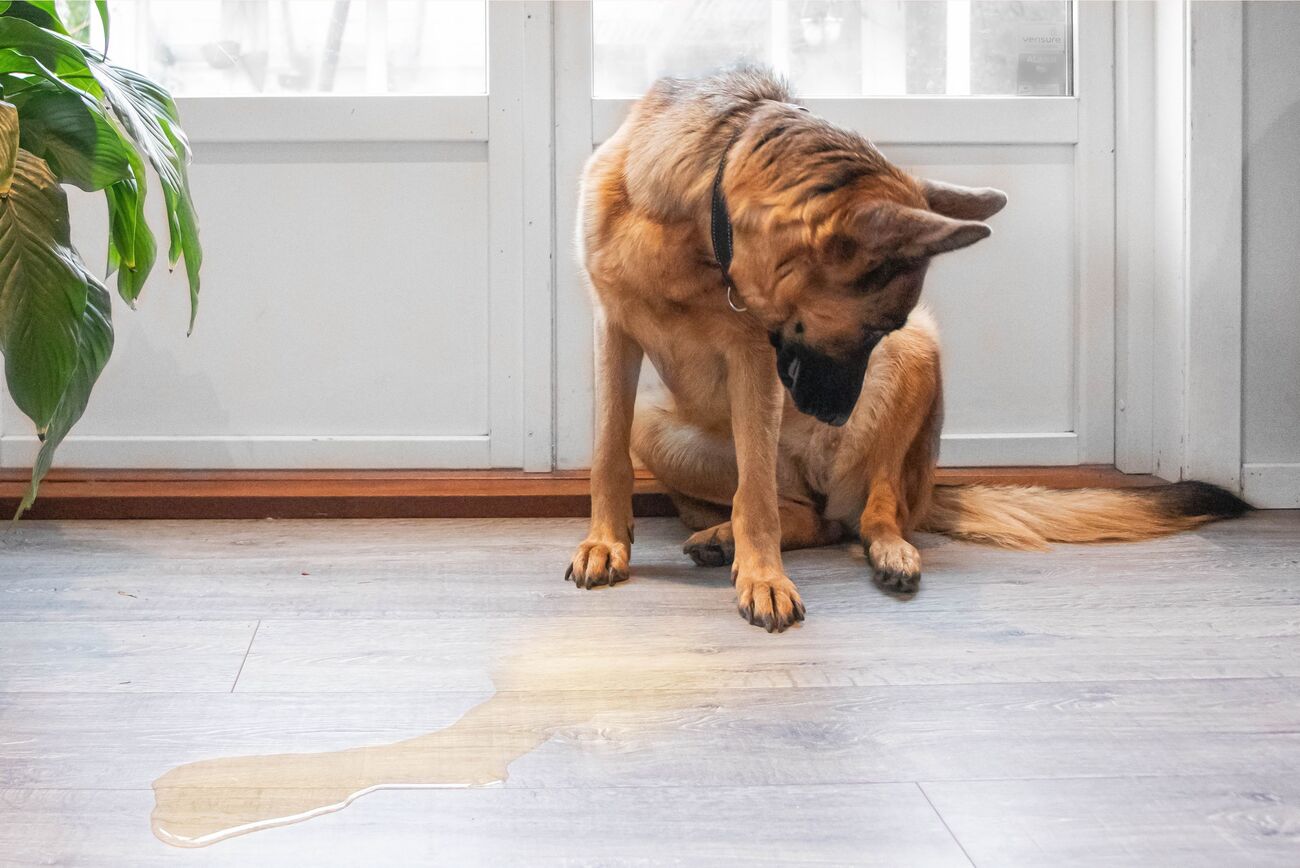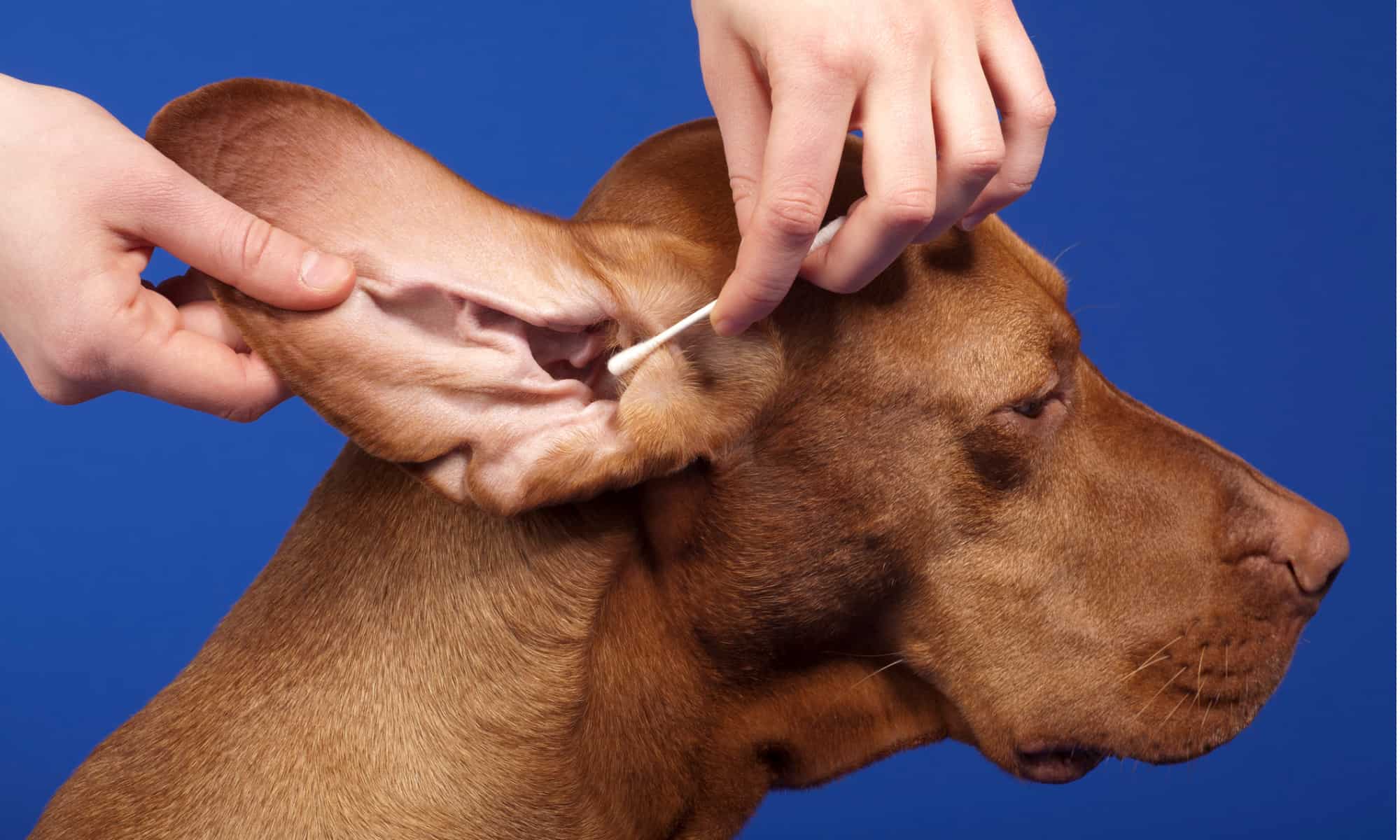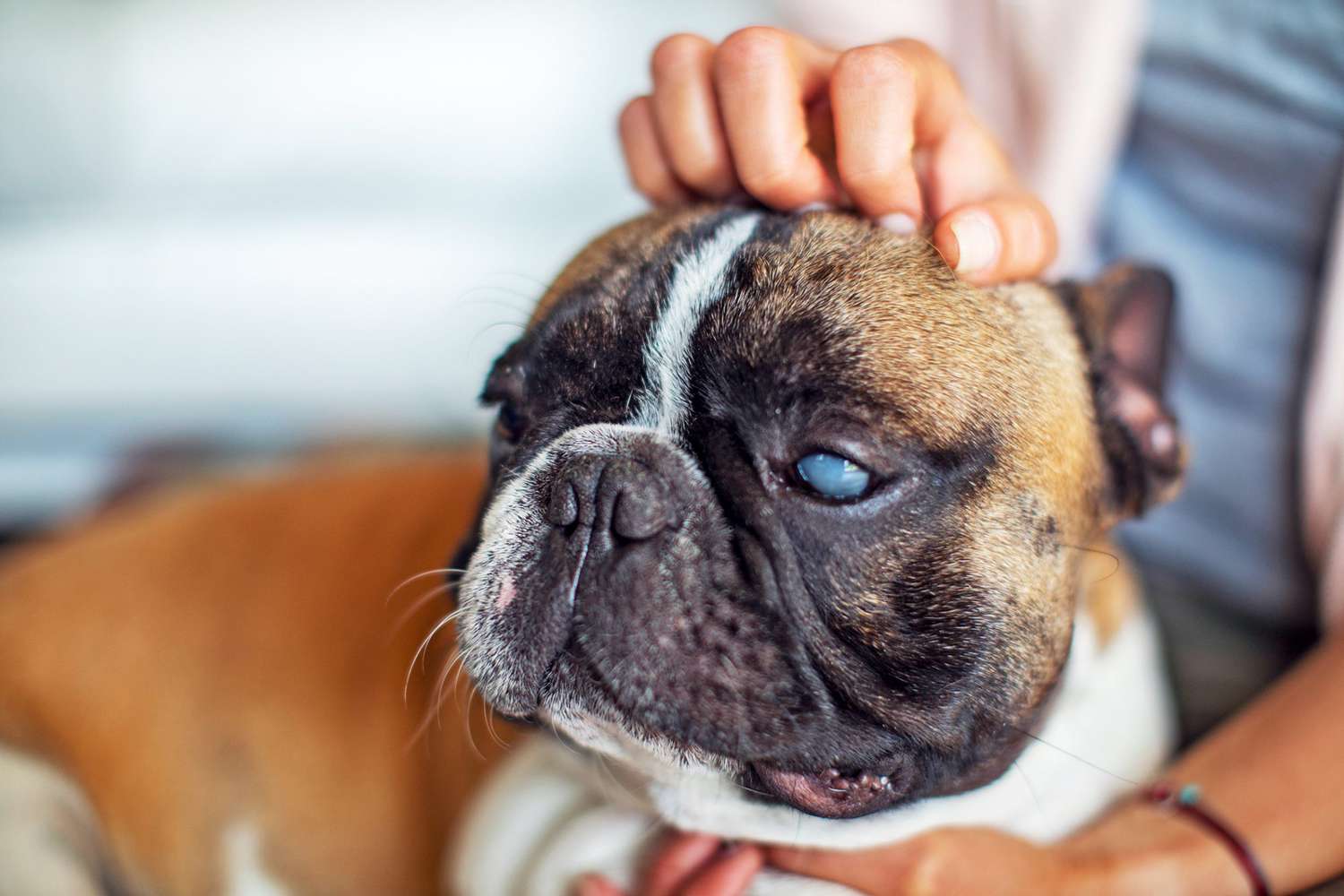Home>Health & Wellness>Common Health Issues>Why Are Fleas More Attracted To Dogs
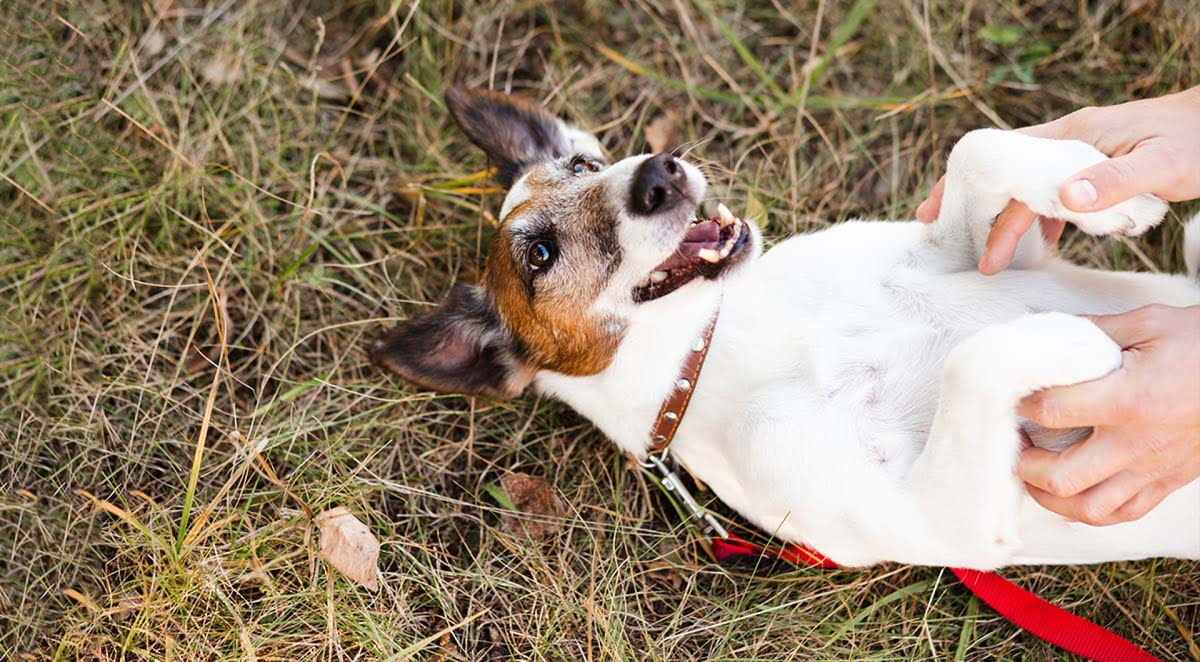

Common Health Issues
Why Are Fleas More Attracted To Dogs
Published: February 14, 2024
Learn about common health issues for dogs and why fleas are more attracted to them. Discover effective solutions to keep your furry friend healthy and happy.
(Many of the links in this article redirect to a specific reviewed product. Your purchase of these products through affiliate links helps to generate commission for Pawsomeoldies.com, at no extra cost. Learn more)
Table of Contents
Introduction
Fleas are a common nuisance for dogs and their owners. These tiny, blood-sucking parasites can cause discomfort and health issues for our furry friends. Understanding why fleas are more attracted to dogs is crucial in preventing infestations and keeping our pets healthy and happy.
In this article, we will delve into the fascinating world of fleas and explore the factors that make dogs particularly appealing to these pesky creatures. By gaining insight into the biology of fleas and the specific traits of dogs that attract them, we can take proactive measures to protect our canine companions from flea infestations.
Let's embark on a journey to uncover the secrets behind the affinity between fleas and dogs, shedding light on the intricate interplay of biological, environmental, and behavioral factors that contribute to this phenomenon. By the end of this exploration, you will be equipped with valuable knowledge to safeguard your dog from the persistent allure of fleas.
Read more: Why Does One Of My Dogs Have More Fleas?
The Biology of Fleas
Fleas, scientifically known as Siphonaptera, are small, wingless insects that have evolved to become highly specialized parasites. These resilient creatures have thrived for millions of years, adapting to various environments and hosts. Understanding the biology of fleas is essential in comprehending their attraction to dogs.
Fleas undergo a complete metamorphosis, progressing through four distinct life stages: egg, larva, pupa, and adult. The entire life cycle can range from a few weeks to several months, depending on environmental conditions such as temperature and humidity. Female fleas lay eggs on the host animal, which then fall off into the surrounding environment, such as the dog's bedding or carpeting.
The larvae hatch from the eggs and are highly sensitive to light, preferring dark, humid areas. They feed on organic debris and flea feces, which consist of undigested blood from the host. After undergoing several molts, the larvae spin cocoons and enter the pupal stage. Within the protective cocoon, the pupa develops into an adult flea, awaiting the right conditions to emerge.
Adult fleas are equipped with specialized mouthparts designed for piercing the skin of their host and feeding on blood. They are remarkably agile and can jump impressive distances, allowing them to move between hosts and evade capture. Fleas are resilient and can survive for extended periods without a blood meal, making them formidable adversaries in the battle against infestations.
The biology of fleas underscores their remarkable adaptability and reproductive prowess, enabling them to thrive in diverse environments and infest a wide range of hosts, including dogs. By comprehending the intricate life cycle and survival mechanisms of fleas, we can appreciate the challenges posed by these persistent parasites and develop effective strategies to protect our canine companions from infestations.
Factors That Attract Fleas to Dogs
Fleas exhibit a remarkable ability to detect and target their preferred hosts, and dogs are particularly susceptible to their allure. Several factors contribute to the strong attraction of fleas to dogs, making these beloved pets prime targets for infestations.
-
Warm-Blooded Hosts: Fleas are naturally drawn to warm-blooded animals, as their body heat provides an ideal environment for the parasites to thrive. Dogs, with their relatively high body temperature, offer a welcoming habitat for fleas to feed, reproduce, and complete their life cycle.
-
Abundance of Hair: The dense fur of dogs provides an abundance of hiding places for fleas, offering protection and easy access to a blood meal. Fleas can maneuver through the fur, making it challenging for dogs and their owners to detect and eliminate these elusive parasites.
-
Ample Blood Supply: Dogs, being larger than many other potential hosts, offer a plentiful supply of blood, sustaining flea populations and facilitating their reproduction. The availability of a substantial blood source makes dogs highly attractive to fleas seeking nourishment and a conducive environment for breeding.
-
Behavior and Activity: Dogs' active lifestyles and outdoor excursions increase their exposure to flea-infested environments. Whether frolicking in the backyard, exploring nature trails, or socializing with other animals, dogs frequently encounter areas where fleas thrive, heightening the risk of infestation.
-
Scent and Chemical Signals: Dogs emit a unique combination of scents and chemical signals that can attract fleas from a distance. These olfactory cues, including pheromones and skin odors, serve as beacons for fleas seeking a suitable host. Additionally, the carbon dioxide and body heat emitted by dogs signal the presence of a potential blood meal, further enticing fleas to target these animals.
Understanding the factors that make dogs irresistible to fleas is crucial in implementing effective preventive measures and safeguarding our canine companions from infestations. By recognizing the specific traits and behaviors that attract fleas to dogs, pet owners can take proactive steps to minimize the risk of infestation and ensure the well-being of their beloved pets.
The Role of Dog's Body Odor
The distinctive body odor emitted by dogs plays a significant role in attracting fleas to these beloved pets. Dogs possess a unique scent profile influenced by various factors, including their breed, diet, grooming habits, and overall health. This characteristic odor, imperceptible to humans but discernible to fleas, serves as a potent attractant for these persistent parasites.
The composition of a dog's body odor is multifaceted, encompassing a blend of pheromones, skin oils, and microbial byproducts. Pheromones, chemical signals secreted by the dog's skin and glands, play a pivotal role in communication and social interaction among canines. While these pheromones are essential for dogs to convey information and establish social bonds, they also serve as a beacon for fleas seeking a suitable host.
In addition to pheromones, the natural oils produced by a dog's skin contribute to its distinct odor. These oils, known as sebum, serve various functions, including moisturizing the skin, repelling water, and providing a protective barrier. However, the same oils that benefit the dog can also attract fleas, as they contain organic compounds and nutrients that serve as a source of sustenance for these parasites.
Furthermore, the microbial community residing on a dog's skin and coat generates metabolic byproducts that contribute to its unique scent. The interplay between the dog's microbiota and the environment results in the production of volatile compounds that form part of the dog's olfactory signature. Fleas, equipped with highly sensitive olfactory receptors, can detect and home in on these chemical cues, guiding them to their preferred host.
The role of a dog's body odor in attracting fleas underscores the intricate interplay between biological, chemical, and environmental factors. While the dog's scent serves essential functions in communication and maintaining skin health, it inadvertently heightens its appeal to fleas. Understanding the nuances of a dog's body odor and its influence on flea attraction empowers pet owners to implement proactive measures to mitigate the risk of infestation and protect their canine companions.
By recognizing the pivotal role of a dog's body odor in the dynamics of flea infestations, pet owners can prioritize regular grooming, hygiene, and preventive measures to minimize the allure of their pets to these persistent parasites. Through proactive management and informed care, dogs can enjoy a healthier, more comfortable existence, free from the incessant nuisance of flea infestations.
The Importance of Regular Grooming
Regular grooming plays a pivotal role in safeguarding dogs against flea infestations and promoting their overall well-being. Grooming encompasses a range of practices, including brushing, bathing, and maintaining proper hygiene, all of which contribute to minimizing the risk of fleas targeting our beloved canine companions.
Brushing your dog's coat on a consistent basis serves multiple purposes in flea prevention. Firstly, it helps to remove loose fur, dirt, and debris that could potentially harbor flea eggs and larvae. By eliminating these potential breeding grounds, pet owners can disrupt the flea life cycle and reduce the likelihood of infestations taking hold in the dog's environment.
Furthermore, regular brushing enables pet owners to detect early signs of flea activity, such as the presence of flea dirt (feces) or the actual parasites themselves. Identifying fleas at an early stage empowers pet owners to take prompt action, whether through targeted treatments, preventive measures, or seeking guidance from a veterinarian. Additionally, brushing promotes healthy circulation and distributes natural oils throughout the dog's coat, contributing to skin health and resilience.
Bathing your dog with a gentle, vet-recommended shampoo is another essential aspect of regular grooming that aids in flea prevention. Bathing not only helps to remove existing fleas and their eggs but also disrupts the flea life cycle by eliminating immature stages of the parasites. It is important to use products specifically formulated for dogs, as human shampoos and harsh chemicals can be detrimental to the dog's skin and coat.
Maintaining proper hygiene, including regular nail trimming, ear cleaning, and dental care, contributes to the overall health and comfort of dogs while reducing the risk of flea infestations. Clean, well-groomed dogs are less likely to attract fleas, as their environment is less conducive to the parasites' survival and reproduction.
In addition to physical grooming practices, the use of preventive measures, such as flea combs, topical treatments, and oral medications prescribed by veterinarians, further fortifies the defense against fleas. These preventive strategies, when integrated into a comprehensive grooming routine, provide layers of protection against flea infestations, ensuring the well-being and comfort of our canine companions.
By prioritizing regular grooming as an integral part of canine care, pet owners can proactively mitigate the allure of dogs to fleas while fostering a clean, healthy environment for their pets. Through consistent grooming practices and preventive measures, dogs can enjoy a vibrant, flea-free existence, free from the discomfort and health risks associated with flea infestations.
Conclusion
In conclusion, the intricate interplay of biological, environmental, and behavioral factors contributes to the strong attraction of fleas to dogs. From the warm-blooded nature of dogs to their abundant fur and ample blood supply, several elements make these beloved pets prime targets for flea infestations. The distinctive body odor emitted by dogs, influenced by pheromones, skin oils, and microbial byproducts, further enhances their appeal to fleas, underscoring the multifaceted dynamics of this parasitic relationship.
Understanding the factors that make dogs irresistible to fleas is pivotal in implementing effective preventive measures and safeguarding our canine companions from infestations. By recognizing the specific traits and behaviors that attract fleas to dogs, pet owners can take proactive steps to minimize the risk of infestation and ensure the well-being of their beloved pets.
Furthermore, the importance of regular grooming cannot be overstated in the battle against flea infestations. Through consistent grooming practices, including brushing, bathing, and maintaining proper hygiene, pet owners can disrupt the flea life cycle, detect early signs of infestation, and create a less hospitable environment for these persistent parasites. Integrating preventive measures, such as flea combs, topical treatments, and oral medications, into a comprehensive grooming routine further fortifies the defense against fleas, ensuring the comfort and health of our canine companions.
By prioritizing regular grooming as an integral part of canine care and understanding the nuances of flea attraction, pet owners can proactively mitigate the allure of dogs to fleas while fostering a clean, healthy environment for their pets. Through informed care and proactive management, dogs can enjoy a vibrant, flea-free existence, free from the discomfort and health risks associated with flea infestations.
In essence, by gaining insight into the biology of fleas, the specific traits of dogs that attract them, and the pivotal role of regular grooming, pet owners can empower themselves to protect their beloved pets from the persistent allure of fleas. This knowledge equips them to create a harmonious and flea-free environment, allowing dogs to thrive in a state of optimal well-being and comfort.

